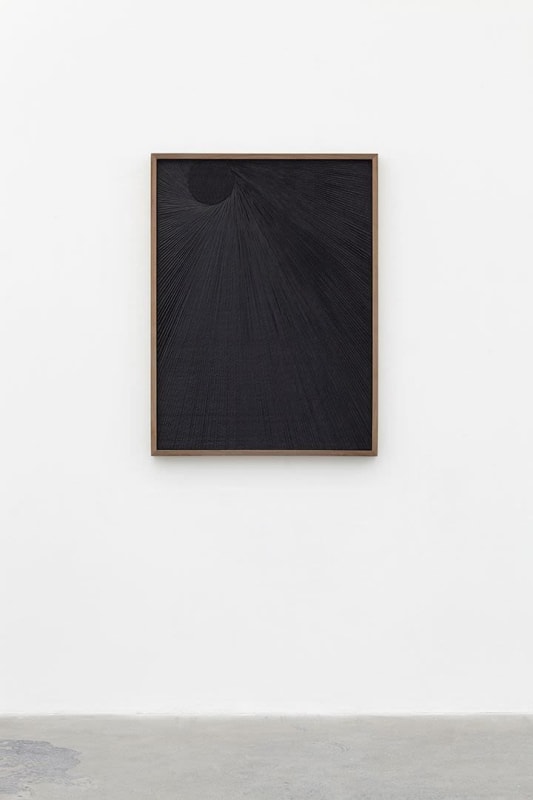BY MAXWELL WILLIAMS
Anthony Pearson works in carving — perhaps one of the most ancient artistic mediums — but his practice puts heavy emphasis on new technologies. In his warehouse-sized studio in Los Angeles last month, ahead of his eponymous show opening this week at Marianne Boesky in New York, Pearson explained how he pours gypsum cement into a frame, strings the hardened material to a jig and cuts patterns into it with a carbide-tipped rug-cutting blade. Other times, he just slices at the smooth cement canvases with an angle grinder.
“There’s no right way to do it,” the 46-year-old artist said, pointing at each work in a series of 8-by-10-inch pieces with diverse patterned cuts. “This piece is Stella/LeWitt ’70s corporate art. And this is like a tire tread. This is like geometry. And this is a Jesus fish. And this is some Factory Records Joy Division cover. It’s this combination of things that make it exciting.”
Pearson’s solo show, his third with Boesky, will feature one gallery of these small pieces, each of which Pearson intends to be viewed individually. In a second space, he will hang works that are more phenomenological — large gypsum hangings that are carved with what Pearson refers to as a “sunburst form,” a concentric moray made from parabolic curves formed by straight lines. The pieces are then glazed with black paint, producing a trippy shimmer. To create an even more experiential atmosphere, Pearson will flank the sunbursts with two pieces created by simply pouring the gypsum cement into frames, to create thick, flowing lava-like works that take the form of caves.
Most of the works in the show are heavy and thick — a hybrid between sculpture and painting. Pearson has also spent years as an abstract photographer, a medium he said is actually not so different from the malleable gypsum cement he’s using now. “The material is really an alchemical material,” he said. “It’s magic when you rewet it, when you sand it, when you start to cut it, when you burnish it, when you wet-sand it, when you pass over it with the jigs and the knives, or when you pour it and it shells over, how you trim it, how you treat it. It reminds me a lot of the magic of photo.”


